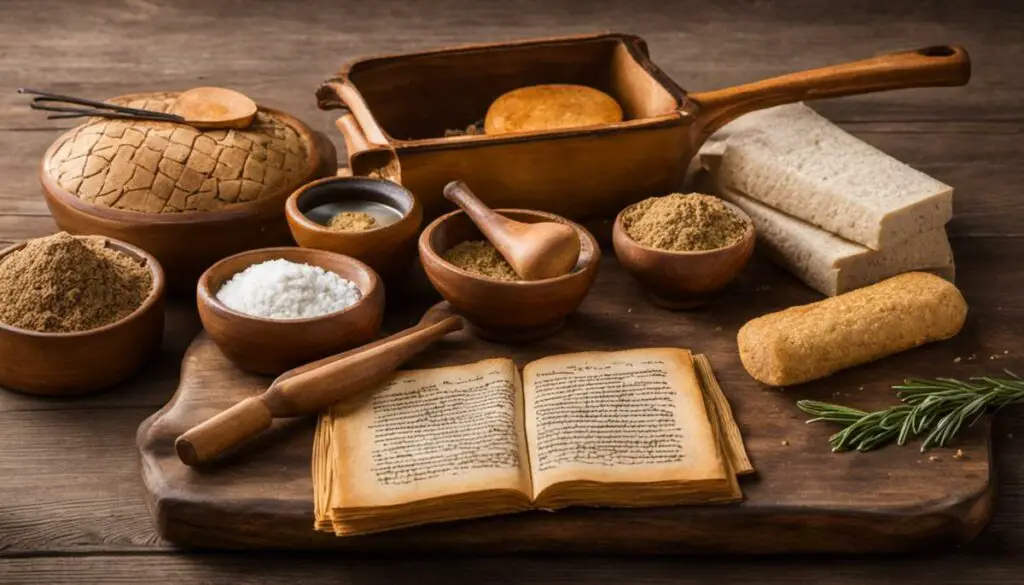

Hardtack, a modest yet remarkable bread, is a testament to the resilience and adaptability of human culinary practices. This simple food, born from basic ingredients and rudimentary cooking techniques, features prominently in chronicles of exploration, war, and survival across centuries and continents.
Hardtack is a durable, shelf-stable biscuit made from flour, water, and sometimes salt. It has historically been used as a staple ration for soldiers and sailors due to its extended shelf life. Resistant to spoilage, it served as a crucial source of sustenance during long voyages and military campaigns.
A food item so humble in its composition yet vital in human history, hardtack has its roots deeply embedded in our past. In its very essence, it encapsulates our forebears’ triumph over scarcity and their ingenious quest for sustenance under strenuous conditions.

Origins Of Hardtack
An Investigative Journey Into The Origins Of Hardtack
Hardtack, a peculiarly resilient food, exhibits a rich and intricate history, possessing a vital relationship with humankind’s survival across several civilizations over the centuries. A dry and dense biscuit, the gastronomic treasure holds much more than its undoubted fans would expect. So, where does hardtack originate from? The question is intriguing and opens up a realm of historical findings that reflect how societal advancements impacted the most basic human necessity—sustenance.
Historical records denote the roots of hardtack in the maritime ventures of the early Egyptians. Their seafaring expeditions across the Red Sea necessitated sustenance that could withstand long journeys without spoilage. Consequently, around 4,000 years ago, the remarkably resilient food hardtack started its journey, demonstrating an uncanny ability to retain nutrients and survive for seemingly indefinite periods in harsh conditions.
Its usage wasn’t limited to the confines of Egypt. Ancient Greeks and Romans used their version of hardtack, referred to as “bucellatum,” featuring prominently in the staples of Roman soldiers. Similarly, civilizations as far off as the Arabian Peninsula consumed a version of hardtack, a testament to its consequential evolution alongside human civilization.
The advent of extended maritime voyages during the age of exploration further underscored hardtack’s value as a long-lasting food source. It developed a pronounced relationship with the sea, generating a series of appellations associated with naval adventures, including “sea biscuit” and “ship’s biscuit,” This unique creation could survive for years without refrigeration, becoming an essential part of sailors’ ration for sea voyages linking continents, such as those undertaken by Columbus and Magellan.
Hardtack was a fundamental element in the United States during wars and military campaigns. During the American Civil War, the food was colloquially named the “teeth duller” by the Union soldiers, given its almost rock-hard consistency kept it edible for years, thus playing a crucial survival role during long military campaigns.
Thus, the origin of hardtack weaves its way through various civilizations, its presence becoming essential during wars, expeditions, and periods of scarcity. Far more than merely a biscuit, hardtack reflects humanity’s adaptability and resilience in the face of adversity. Further research also invites exploration into the culinary, historical, and anthropological implications of its usage over centuries. It is a humble testament to the human resolve and ingenuity to create sustenance that can outlast the most challenging conditions.
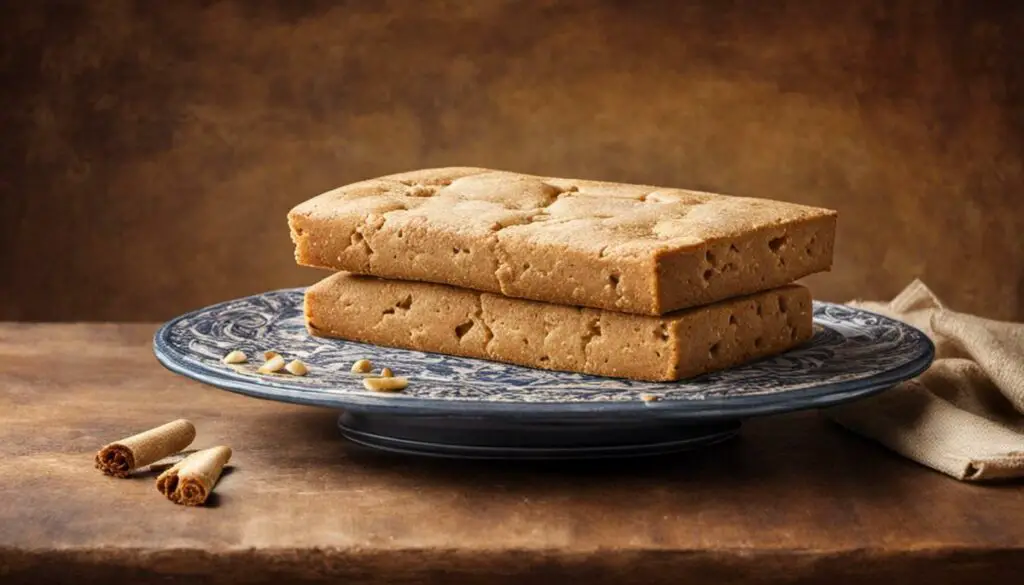

Nutritional Component And Shelf-Life Of Hardtack
Hardtack, or ‘ship’s biscuit’ as it was commonly referred to within naval circles, was indeed an invention born out of necessity. It sustained seafarers, soldiers, and civilians alike during times of scarcity, long journeys, and military campaigns where fresh food was scarce. A deep dive into the science behind the sustenance garnered from this seemingly simple piece of baked dough reveals intriguing details of its dietary components and the nature of its extraordinary longevity.
Traditionally, hardtack consisted simply of flour, water, and occasionally, salt. Given its simplicity, this straightforward blend resulted in a hardy, durable, and relatively nutritious product. The flour used in the hardtack contributed mainly complex carbohydrates, a consistent energy source. This was essential during extended voyages and taxing military campaigns, where steady and reliable dietary energy was required for survival and performance.
The minor addition of salt, when present, offered hardtack traces of essential minerals such as sodium and chloride, both of which serve critical roles in maintaining fluid balance and nerve function in the human body. However, the nutrient profile of traditional hardtack was admittedly limited due to its simplistic composition and lacked valuable dietary components, such as vitamins, proteins, and dietary fibers, among other micronutrients.
This simplicity, paradoxically, was the key to hardtack’s remarkable shelf-life. The absence of perishable components, such as fats, eggs, or dairy, meant fewer substrates were available for microbial degradation, thus granting hardtack a natural resistance to spoilage. Baking further enhanced its durability, dehydrating the bread and creating inhospitable conditions for microbial life. This transformed hardtack into a form of preserved food, capable of withstanding the passage of time and the harsh conditions prevalent during long sea voyages and battlefield campaigns.
Moreover, the storage and handling of hardtack also played an instrumental role in extending its shelf life. Traditionally, hardtack was stored in well-sealed barrels, bags, or boxes that were thoroughly dried to prevent moisture retention. The dough was also rolled out extremely thinly before baking, making it less prone to internal moisture retention and mold growth, thereby aiding its preservation.
In a world where food science and preservation techniques were scarce, hardtack’s nutritional benefits and extraordinary resilience testify to human ingenuity and the determination to adapt and survive under the most challenging circumstances. Hardtack undeniably occupies a unique place in history as a symbol of triumph over adversity and human resilience in the face of daunting obstacles. As we progress and explore further avenues of food technology and nutrition, the core values of resilience, adaptability, and simplicity encapsulated within a humble piece of hardtack undoubtedly provide food for thought.
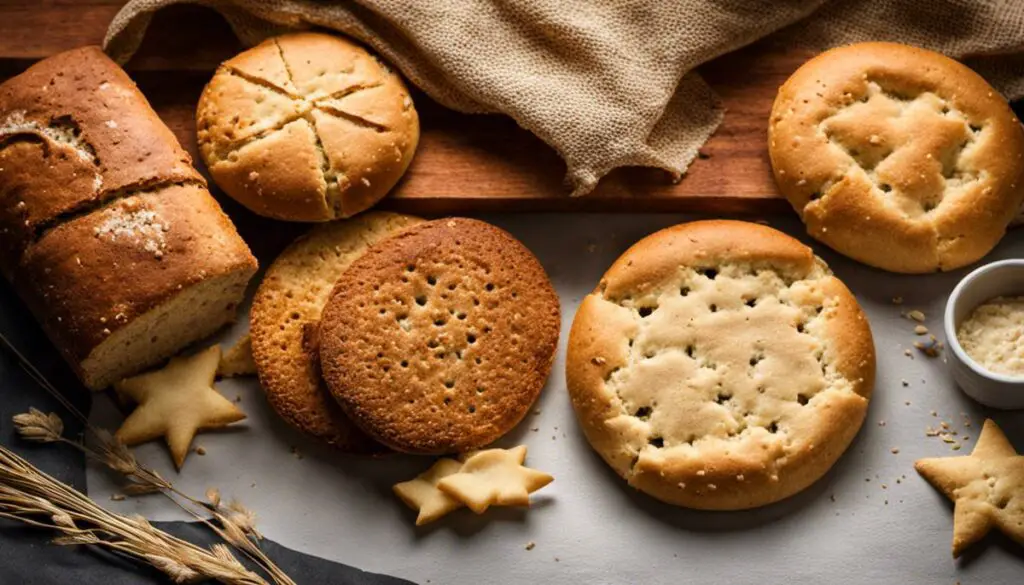

How To Make Hardtack
To make hardtack, combine flour and water to form a stiff dough, then roll it out and cut it into squares. Bake the squares at a low temperature until dry and hard. This enduring, simple recipe has been a staple ration for long-term storage and sustenance, notably used in historical military provisions and long sea voyages.
For Gluten-Free Hardtack check out our post Simple Steps To Gluten-Free Hardtack.
What You Will Need:
Kitchen Tools:
- mixing bowl
- mixing spoon
- rolling pin
- sharp knife or cutter for shaping
- fork or chopstick for poking holes
- baking sheet or tray for baking
Ingredients:
- 3 cups flour
- 1 cup water
- 2-1/4 teaspoon salt
White flour vs whole wheat flour for hardtack
When making hardtack, both white and wheat flour can be used. Being more refined, white flour may result in a slightly lighter texture and will last longer. With its higher fiber content, wheat flour can provide a heartier, denser biscuit but won’t last as long as white flour. The choice depends on personal preference for texture and nutritional value.
Serving:
This recipe makes between 15 and 18 biscuits; this estimate may vary slightly depending on the specific size and thickness of the biscuits.
Combine Ingredients
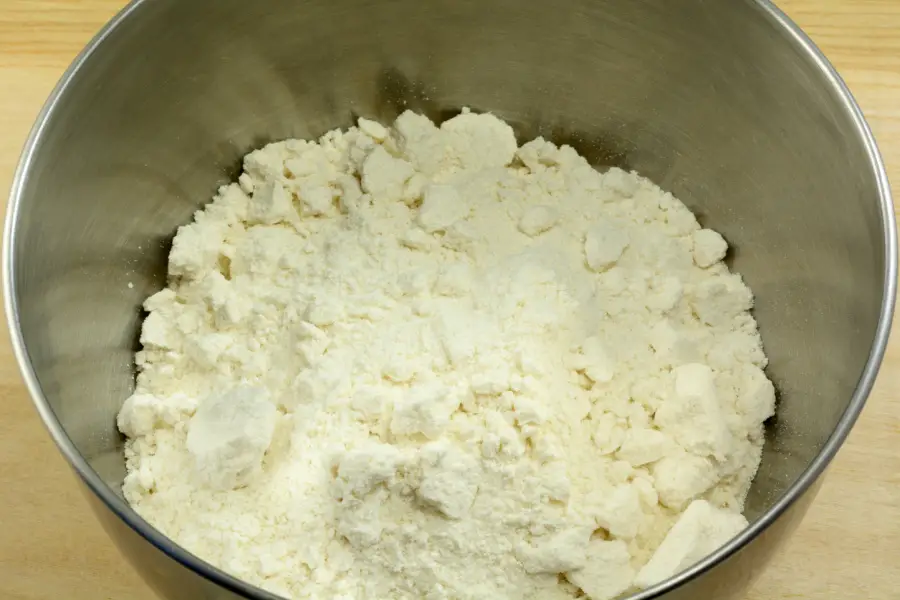
Preheat your oven to 375°F (190°C).
Combine the flour, water, and salt in a mixing bowl.
Knead The Dough
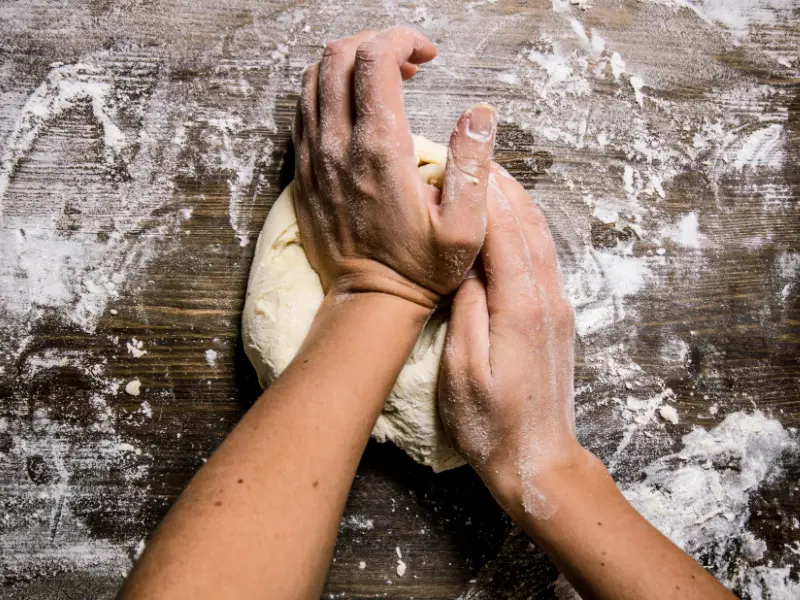
Knead the mixture on a floured surface into a stiff dough.
The dough will be sticky initially, but keep kneading until thoroughly combined.
Roll Out The Dough
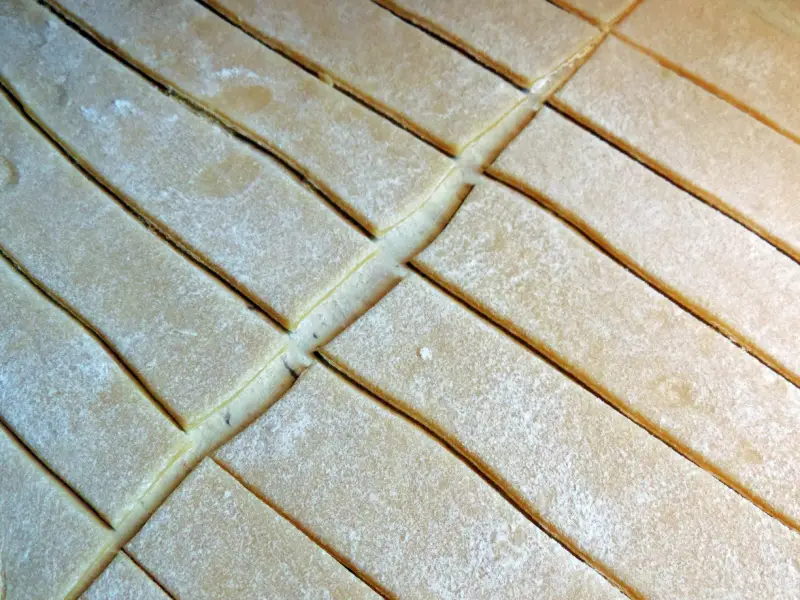
Roll out the dough to a 1/2-inch thickness.
Cut the dough into 3×3 inch squares, 1×3 inch rectangles, or whatever shape you want.
You could even get creative and cut circles with decorative edges.
Poke Holes In Dough

Use a fork to prick each shape with several holes.
Poking holes in hardtack serves the purpose of allowing steam to escape during the baking process, preventing the biscuits from puffing up or becoming too airy. This technique helps achieve the desired dense and durable texture, which is crucial for long-term storage and consumption in challenging environments.
Bake For 30 Mins Each Side

Place the dough shapes on a baking sheet and bake for 30 minutes.
Flip the dough shapes over and bake for 30 minutes or until the hardtack is dry and hard.
Cool And Store

Let them cool completely before storing them in an airtight container for long-term preservation.
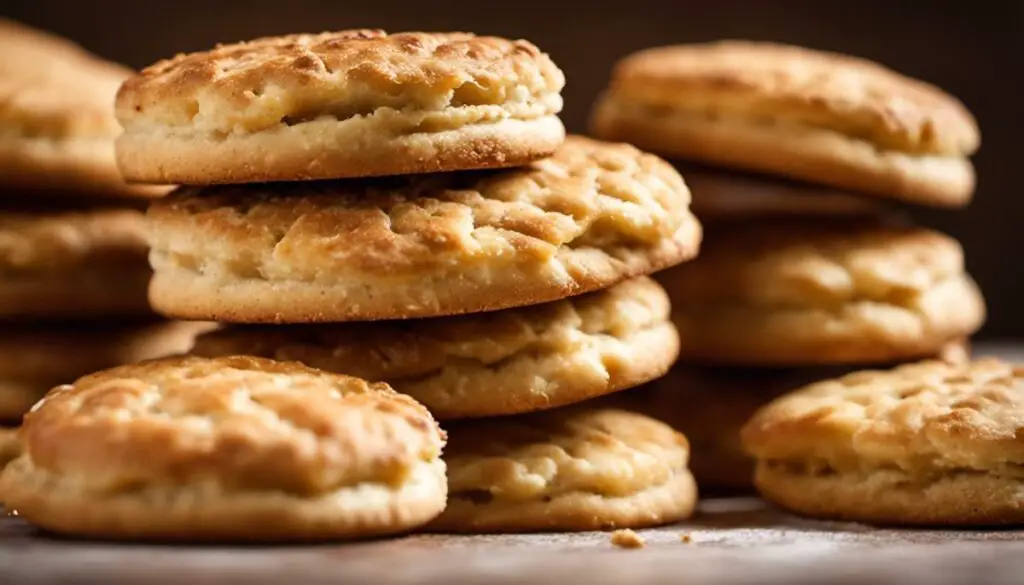

How To Store Hardtack
Once your hardtack has cooled completely, preserving it is a breeze. Storing hardtack effectively is crucial for its longevity.
Once the biscuits have completely cooled, store hardtack in an airtight container in a cool, dry place, away from moisture. Proper storage ensures its longevity, maintaining the durability and edibility of this historically significant and enduring ration.
Ensure the container is stored in a cool and dry environment, away from moisture, to prevent the hardtack from becoming soft or moldy. The airtight seal helps maintain the durability and edibility of hardtack over an extended period. This straightforward storage process aligns with the historical use of hardtack as a resilient, long-lasting ration, allowing it to stand the test of time. Whether kept for emergency preparedness or historical appreciation, proper storage ensures that hardtack remains a reliable and enduring food source.

How To Serve Hardtack
As you explore the ins and out of hardtack, you might wonder, how to serve this enduring ration? Fear not!
Serve hardtack to soften its dense texture by soaking briefly in liquid, such as coffee or soup. Alternatively, crush or grind it into smaller pieces for incorporation into recipes, adding a durable and historic element to culinary endeavors.
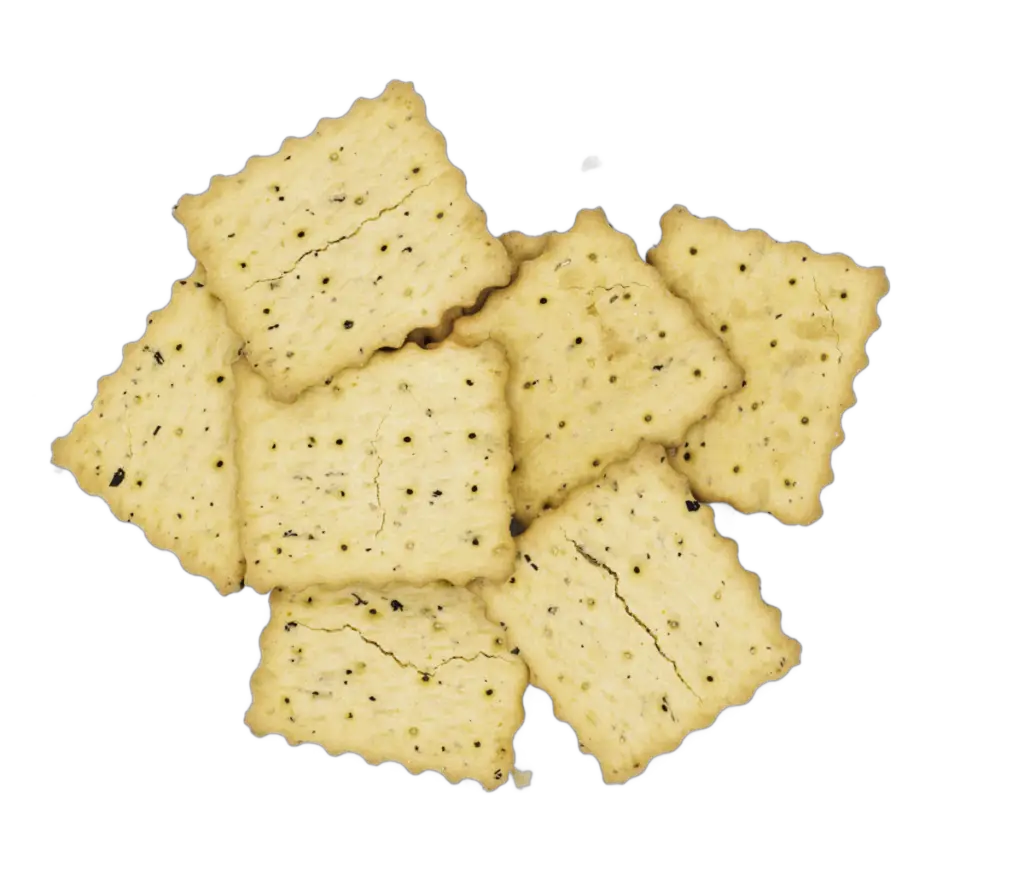

What Is The Shelf Life Of Hardtack
Hardtack, when stored in optimal conditions—cool, dry, and airtight—can have an extended shelf life of 50+ years, showcasing its historical role as a durable and reliable sustenance for prolonged storage and use.
Just remember to soak it before eating it.

Modern Uses And Adaptations Of Hardtack
The advent of industrialization marked a milestone in the evolution of hardtack. As societies industrialized, they also revolutionized their food industries, leading to changes in the composition and preparation of hardtack. For instance, the introduction of mechanical milling in the 19th century drastically altered the nature and quality of flour used as the main ingredient in hardtack.
This period also underlined innovations in baking technology and packaging that significantly extended the lifespan and convenience of hardtack. The invention of vacuum sealing and airtight cans during the late 19th and early 20th centuries notably contributed to the modernization of hardtack preservation methods.
Despite its historical military and maritime significance waning over time, hardtack found renewed relevance in outdoor adventure and survivalism in the late 20th century. Today, recreational adventurers, hikers, and survivalists regard it as a memorable component of their food kit due to its impressive shelf life, hardiness, and portability. Variations of hardtack, fitted to contemporary dietary requirements, offer enhanced nutrition by adding fortifiers such as vitamins and proteins into the mix.
In this era of mass consumption and fast food, the quest for sustainable, simple, and nutritious food brings hardtack back into the limelight. Amid growing concerns over food security and sustainable food systems, hardtack is a model for plant-based, long-shelf-life food that is climate-smart and resource-efficient.
Moreover, due to its intriguing historical journey, hardtack has also gained a place in culinary landscapes as an item of historical curiosity and honesty, appearing in historical reenactments, heritage events, and even food festivals. It reminds people of past hardships and human resilience, creating a unique culinary genealogy in this age of global gastronomy.
The emergence of space travel has sparked an interest in the potential of hardtack for long-duration missions, highlighting the need for food that can maintain its edibility and nutritional quality under extreme conditions. The necessity for compact, nutritious, and storage-efficient food in space travel mirrors the constraints sailors experienced centuries ago aboard their ships.
Hardtack indeed carries a rich repository of knowledge within its crisp layers spanning culinary history, wartime diets, human resilience, food science, and survivalism. Its evolution will undoubtedly continue as the intersection of food technology, sustainability, and cultural appreciation presents new horizons to explore for this testament of human survival and ingenuity.
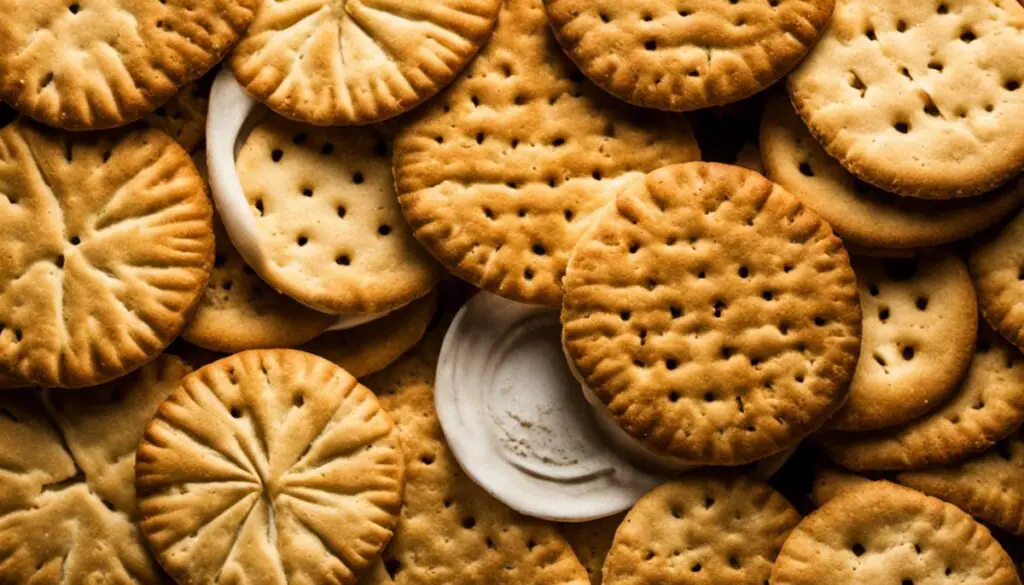

As we trace the story back from our modern kitchens and disaster management facilities to the high seas of explorers and the dusty trails of war-torn landscapes, the quiet persistence of hardtack continues to astound us. It retains its relevance not only as a survival provision but also as a culinary curiosity – a stark reminder of our ancestors’ resourcefulness and the practicality of yesteryears’ cooking. The journey of hardtack, from its rudimentary origins to its current adaptations, is a fascinating culinary lesson, unearthing a rich seam of our collective past through the simple medium of bread.
I hope this post brought value to your day. Please consider sharing it with a friend or on your favorite social media if it did. Thanks For Reading The Dying Art Of Living!

